If you are into unique taste and flavor profiles, chances are that you have had a Rhubarb pie at least once in your life. Besides the pungent flavor and unique taste, what stand out in this plant are the stunning bright red edible stalks. That’s what the plant is primarily grown for.
However, like most plants that are grown, the risks of damage are quite high with this sensitive plant as well. One of the most common issues is the yellowing of the leaves of a Rhubarb plant. Once the leaves start turning yellow, chances are that your plant is on the path toward damage.
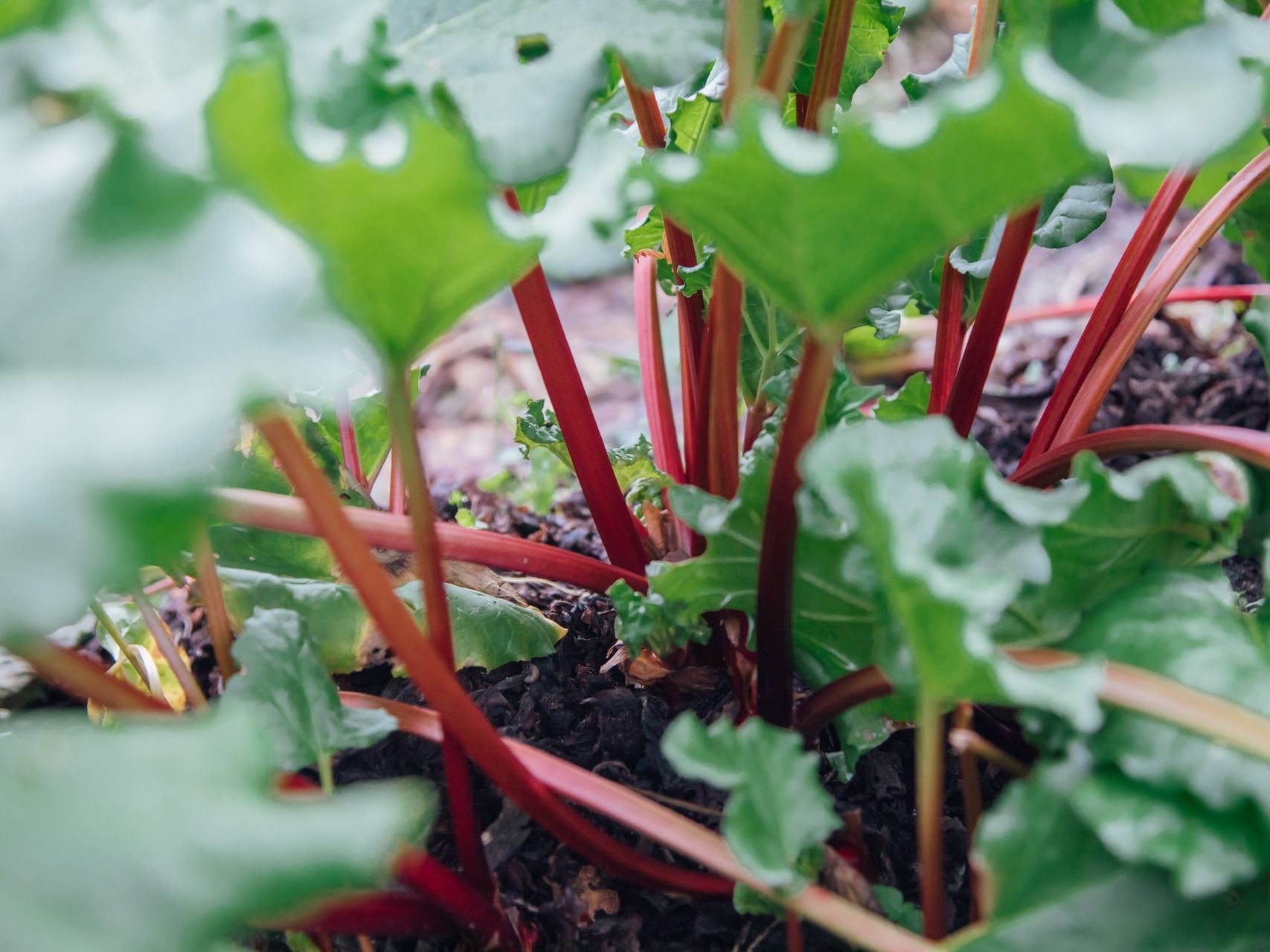
Taking immediate action is not just an option but a necessity if you don’t want to affect the whole harvest and end up damaging all the efforts that you have put in.
This article will explore the top 5 reasons why your Rhubarb leaves are turning yellow and how you can fix it.
Why are my Rhubarb Leaves Turning Yellow?
There are quite a few reasons that are impacting the appearance of your rhubarb leaves. Here are a few that are worth looking into:
1. Imbalanced Watering
Plants need water and sunlight to grow. This is a common concept that we have learned throughout our lives. But, too light or too much of something is going to affect the quality of growth and the overall yield as well.
Improper watering is one of the key contributors to the risks of the rhubarb leaves turning yellow. Since the leaves are quite large and broad, they need a lot of water for their growth, especially if you live somewhere that’s warm and tropical.
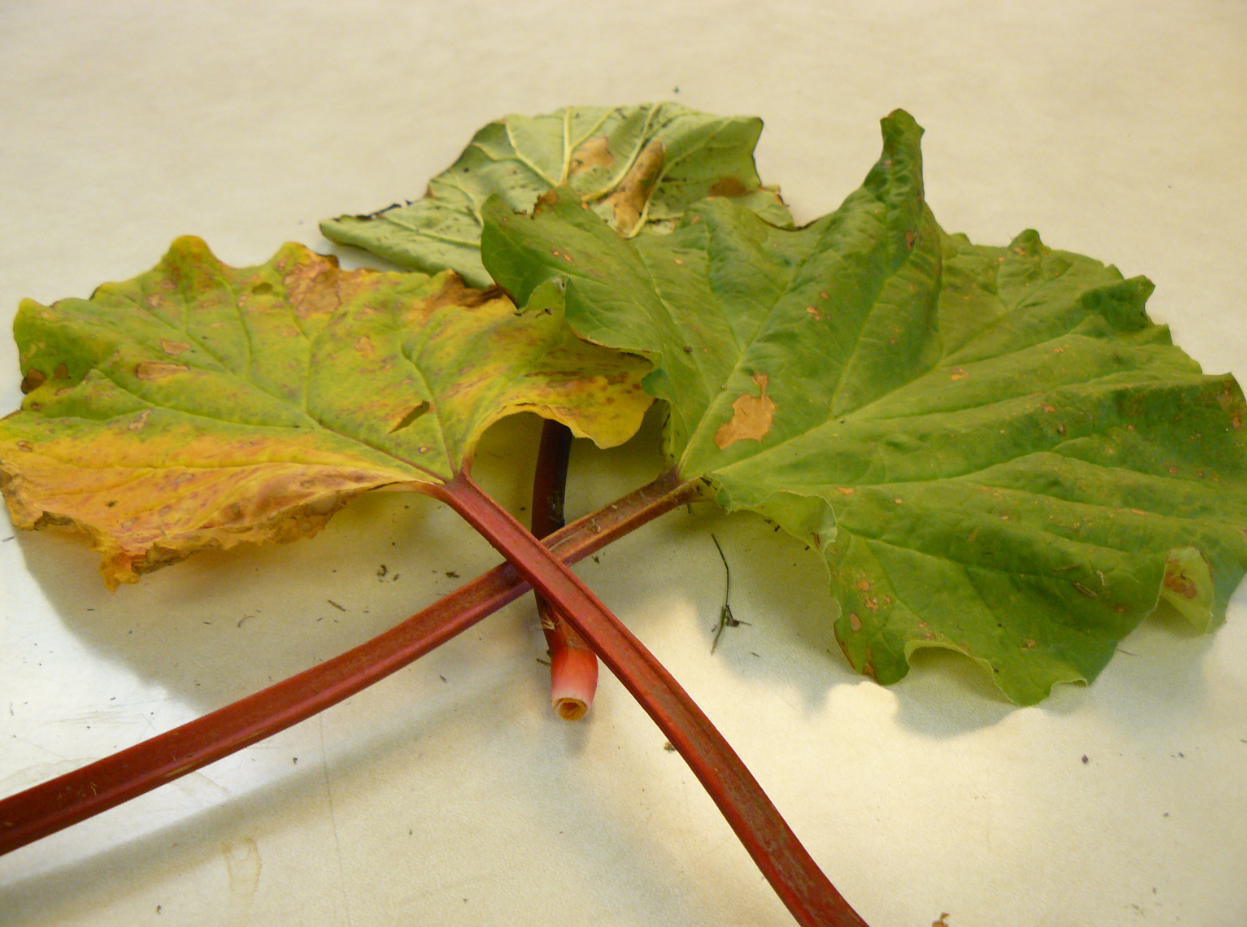
But, you can’t overwater the rhubarb plant as well since that can damage the leaves and turn them yellow as well. Maintaining correct watering requirements is thus crucial for optimal growth.
How to fix it?
We’d recommend getting a moisture meter to check the water levels and the requirements. If it’s too low, you can go ahead and water more.
2. Soil and Temperature Complications
Despite what many say, Rhubarb is quite a sensitive plant, especially when it involves the soil and temperature parameters.
Rhubarb plants need acidic soil with a pH between 6-6.5. So, if your soil is even neutral or alkaline, the same will meddle with the growth and lead to the yellowing of the leaves. Also, when it comes to the temperature, you need to be mindful of growing them in colder temperatures.
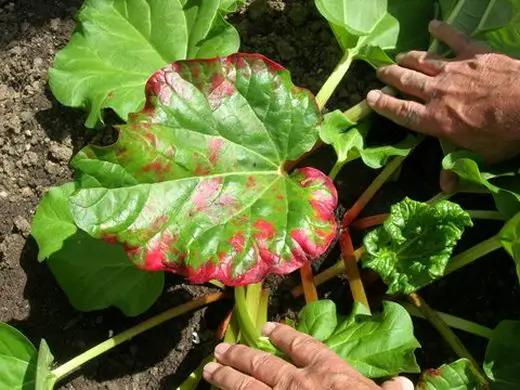
An ideal temperature would be 40 degrees Fahrenheit. So, if you live somewhere too warm, you have to be mindful of this factor.
How to fix it?
Check the soil’s pH now and then to ensure it’s not alkaline. Also, avoid growing rhubarb during the peak summer months if you live somewhere that’s warm and tropical.
3. Nutrient Deficiency
From water, soil, and temperature, the next factor worth considering is the nutrient balance. Like any other living organism on this planet, even plants need optimal nutrition for their growth and development.
Nitrogen is very crucial for growing Rhubarbs. If your soil doesn’t have enough nitrogen, there are possibilities that the same will directly affect the growth of the plant and cause the leaves to wilt or turn a pale yellow from the vibrant green that you normally see.
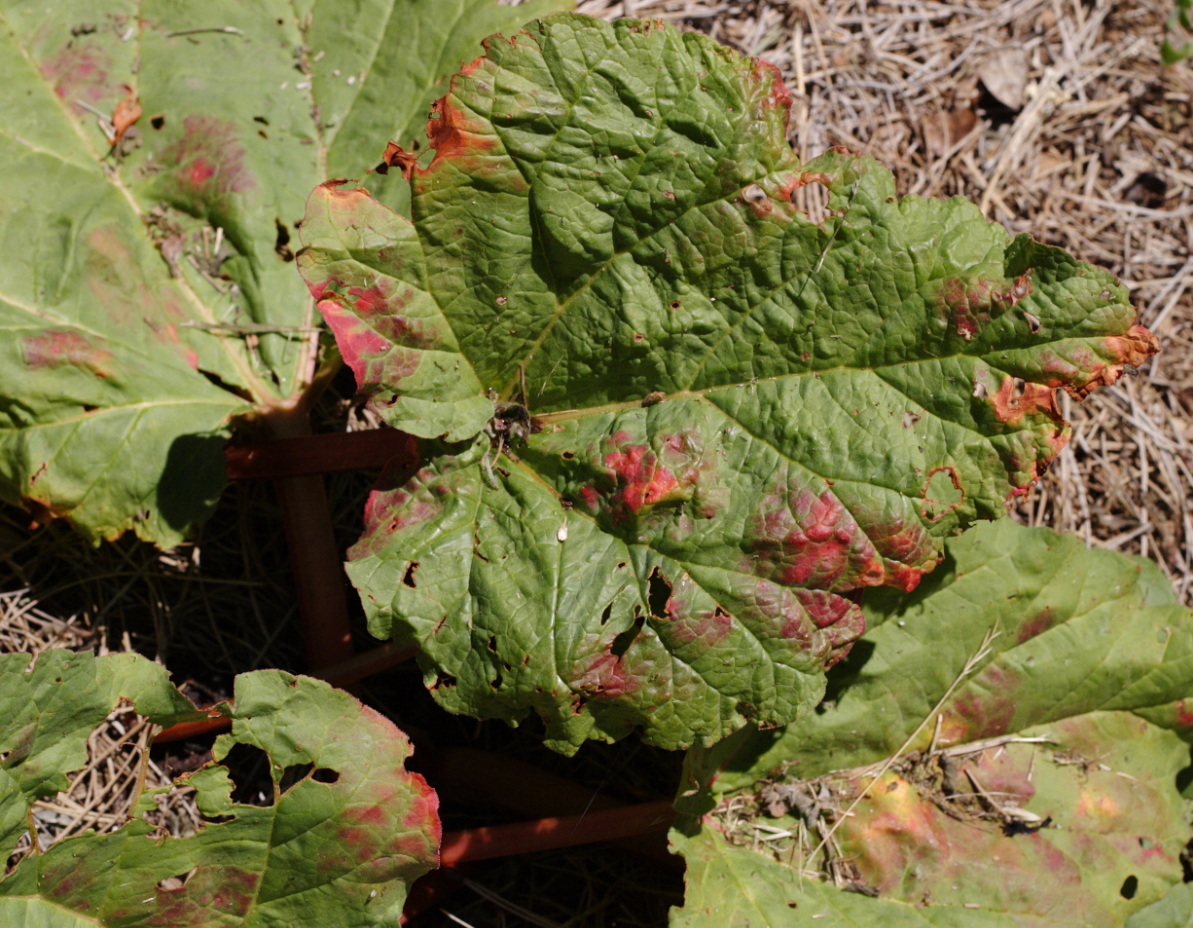
A quick fix of the same will eventually make all the leaves fall off the plant, something that you don’t want in your plant.
How to fix it?
Rhubarb plants need a slow-release nitrogen fertilizer to balance out the deficiency in the soil. This ensures to replenish the iron levels in the soil as well if that’s something worth worrying about.
4. Crown Rot and Leaf Spot
Next up are some of the diseases. Unlike leaf spot which causes big yellow patches to form on the leaves, crown rot is a deadly disease for the plant.
This is a type of root rot wherein the roots start getting black due to prolonged damage and lesion. If you don’t take immediate measures for the same, chances are that the leaves will deteriorate and the whole plant will die before you can salvage what’s left.
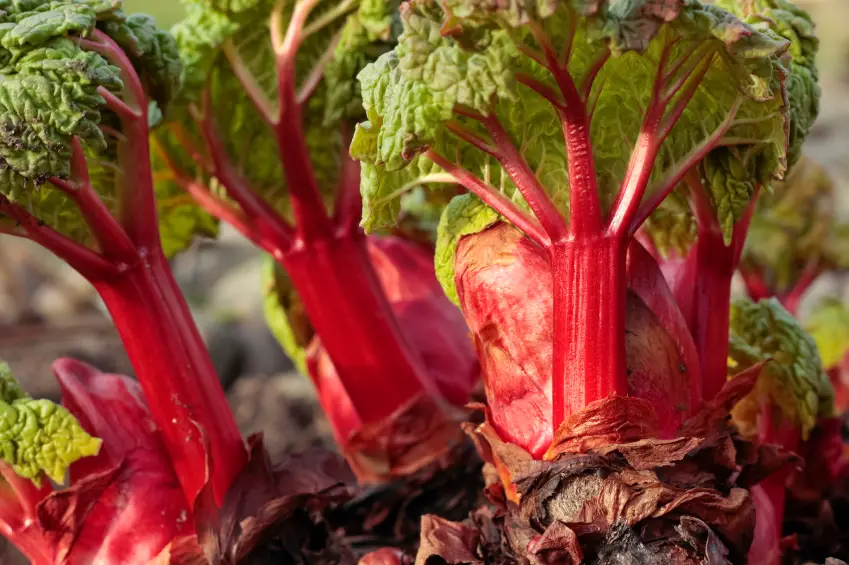
How to fix it?
Your first step is to start the treatment to remove the yellow spots on the leaves. Since most of these issues are due to fungal infections, a sprinkling of fungicide on the leaves and the edible stalks will protect the rest from experiencing the same fate. Using baking soda also works in eliminating the issues but you have to be mindful of the soil’s pH in that case.
5. Pest Attacks
Last but not least are the deadly pest attacks. Since the stalk of the rhubarb has a fleshy and sweet texture to it, it isn’t surprising that pest attacks are quite common in these plants.
You are bound to experience issues with slugs and aphids which frequent the plants and suck on the leaf sap, leaving the plant to form the yellowish tinge on the leaves. Since these pests proliferate very quickly, you must take quick actions to mitigate the complications.
Ideally, we’d recommend that you stay vigilant and then take immediate measures to prevent further deterioration.
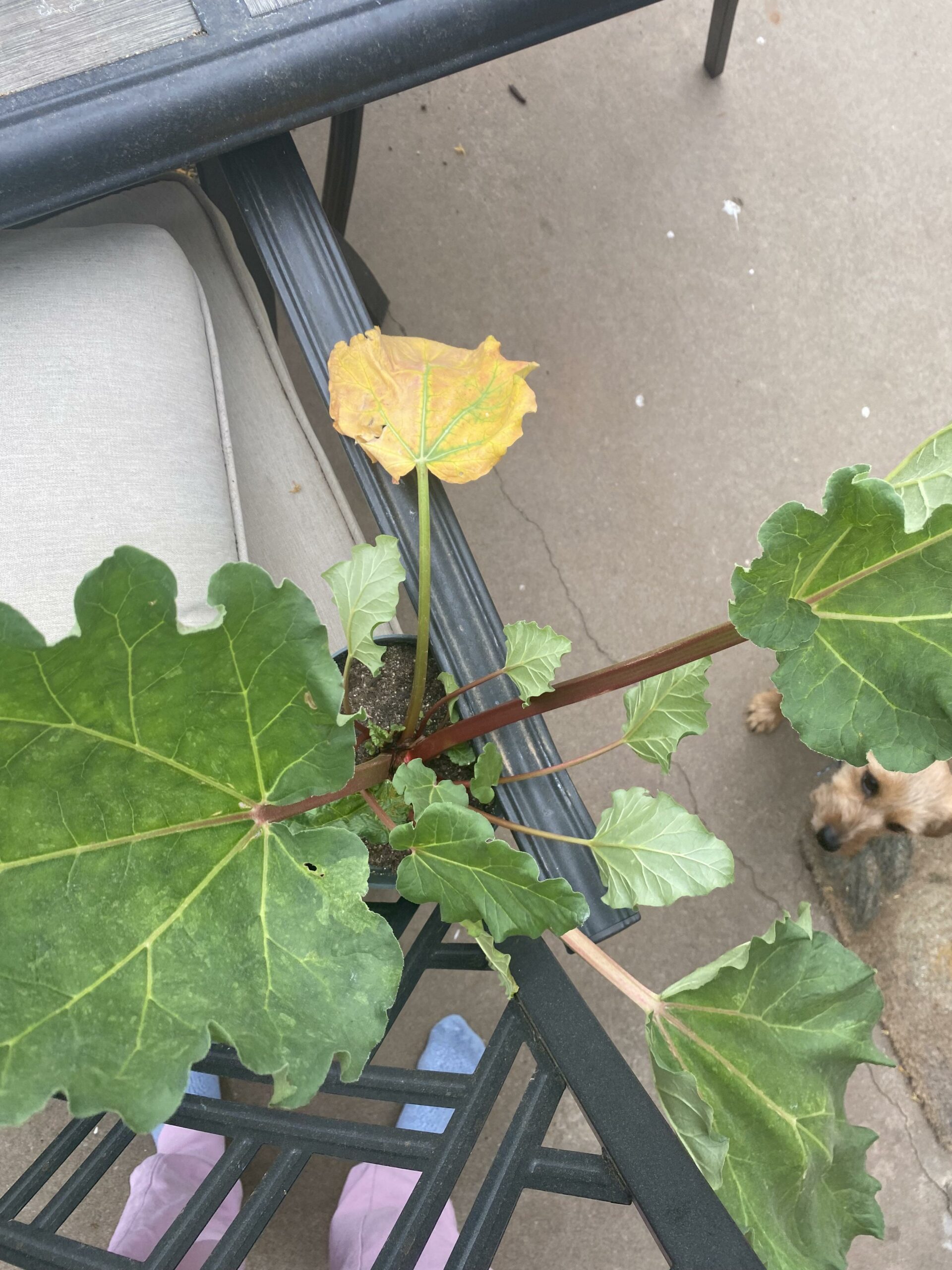
How to fix it?
The easiest way to fix the risks of pests in your rhubarb garden is by spraying some insecticide or pesticide. You might have to use horticultural oil to get rid of the slugs from eating away at the sap of the rhubarb plant. They are available in the market or you can go ahead and DIY some of your own at home as well.
FAQs
1. What do you do when rhubarb leaves turn yellow?
One of the most common reasons why your rhubarb plant is turning yellow is due to lack of water. Fixing this issue isn’t rocket science. What we’d recommend you do is touch the soil and see if it needs water. If it does, you can spray some water into the soil until it’s wet to the touch.
2. Should I cut off yellow rhubarb leaves?
If you notice the rhubarb leaves turning yellow, especially in the first year of growth, we’d recommend cutting off the ripe ones first. Don’t cut off all the leaves in the first year of harvesting because that will end up damaging the efficacy of growth in the next years. So, cut the ripe ones only.
3. Can you restore yellow leaves in rhubarb?
If you notice the rhubarb leaves turning yellow, there are multiple reasons why that could happen. What we’d recommend you do first is identify the cause. Why are your rhubarb leaves turning yellow? Once you identify the issue, it becomes a lot easier for you to implement the necessary fix to revive the plant.
4. What is the best fertilizer for rhubarb plants?
Rhubarb doesn’t require frequent fertilizer application. However, spraying the required amount of fertilizer annually is very crucial. The all-purpose garden fertilizer is considered the best option in the lot, especially because of the equal ratio of all the chemicals in it, which take care of the soil’s nutrient requirements.
5. What is lacking when leaves turn yellow?
If you notice your rhubarb leaves turning yellow, the most common reason behind that is due to lack of optimal iron levels in the soil. In such cases, you might have to spray the ground and soil with the best quality fertilizer to sort out the issue.
Conclusion
Rhubarb is one of the most unique plants and has beautiful foliage that spruces up the look of your garden. Since they are quite sensitive to changes, being mindful of these factors is very important. The last thing that you want to do is witness the plants getting worse with every passing day. We hope the tips and measures shared in this guide give you a good understanding of things related to the yellowing of the leaves.

![5 Reasons for Rhubarb Leaves Turning Yellow [How to Fix]](https://www.plantsofmerit.org/wp-content/uploads/2022/07/5-Reasons-for-Rhubarb-Leaves-Turning-Yellow-How-to-Fix.jpg)